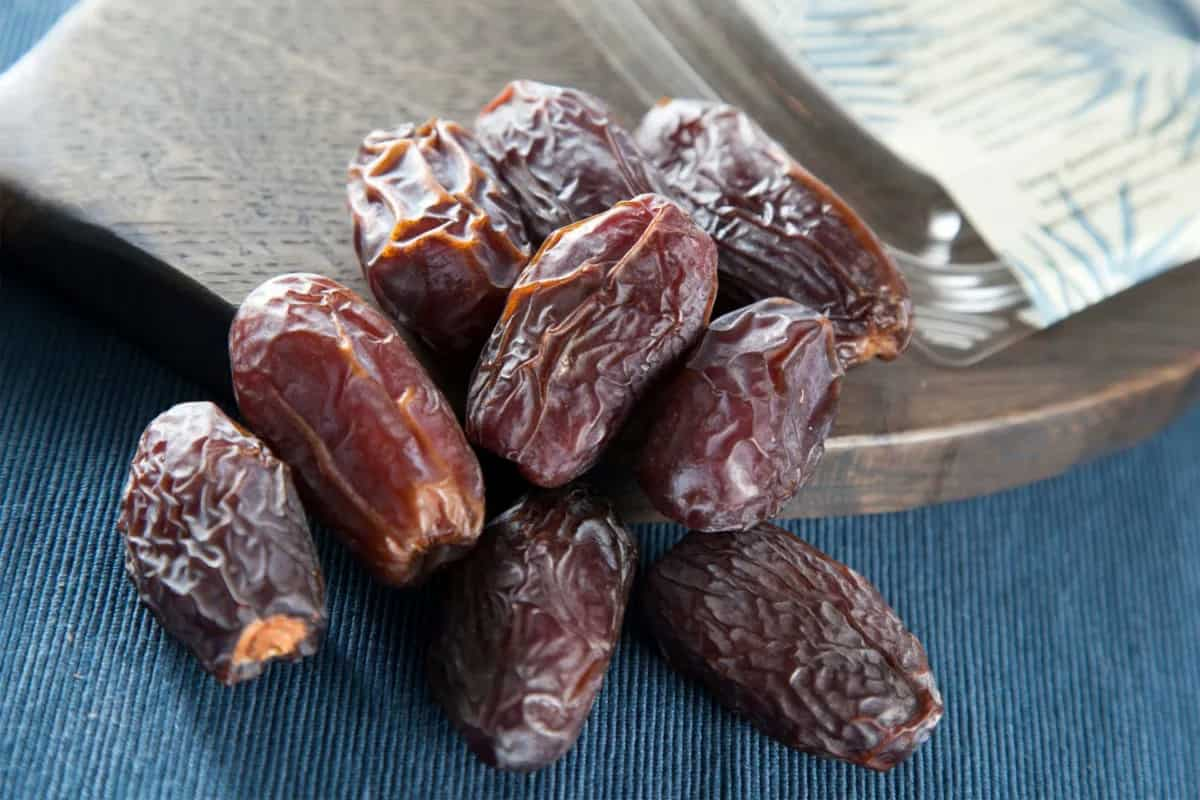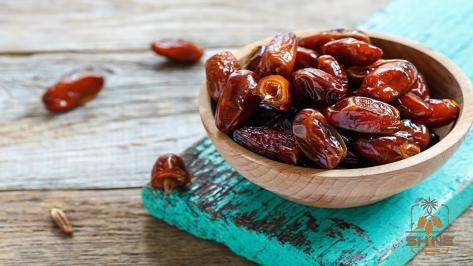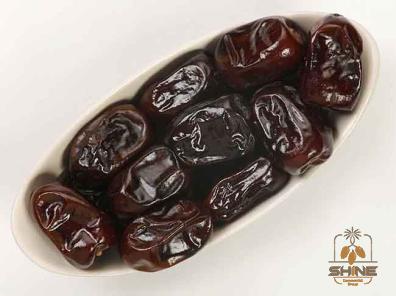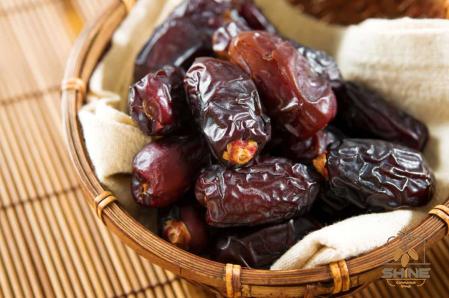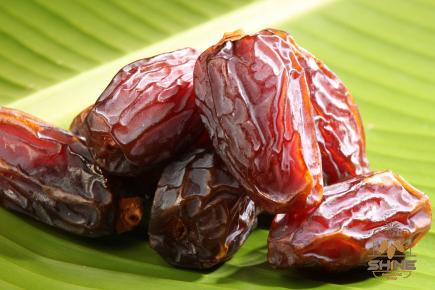Kabkab dates are excellent for consumption! Not to mention that there is even a recipe for energy balls with no peanut butter!
Energy balls were extremely popular in the field of health and fitness a few years ago, and they continue to be popular now… and there’s a solid reason for that! They are really easy to prepare, the ideal recipe for meal prepping, and can be eaten for breakfast, as a snack, or even as a dessert!
There are numerous variations of energy balls, which I will explain in greater depth in the following paragraphs.
The date-based energy balls will be the topic of discussion for this post. Date energy balls are among my favourites since, in most cases, they do not contain grains, they do not contain any additional sugar, and they taste really fantastic.
Larabars are the source of inspiration for the majority of my date-based energy balls. Larabars are a famous brand of energy bars that can be purchased in stores and are created with dates, nuts, and a variety of other mix-ins.
I have a few recipes for handmade Larabars, such as my coconut chocolate chip Larabars, but in all honesty, I like to roll them into energy balls so that they are more convenient to eat as snacks.
Different kinds of energy balls
You may have already realised that there are a great many variants of energy balls, and that each of these variants is known by a distinct name.
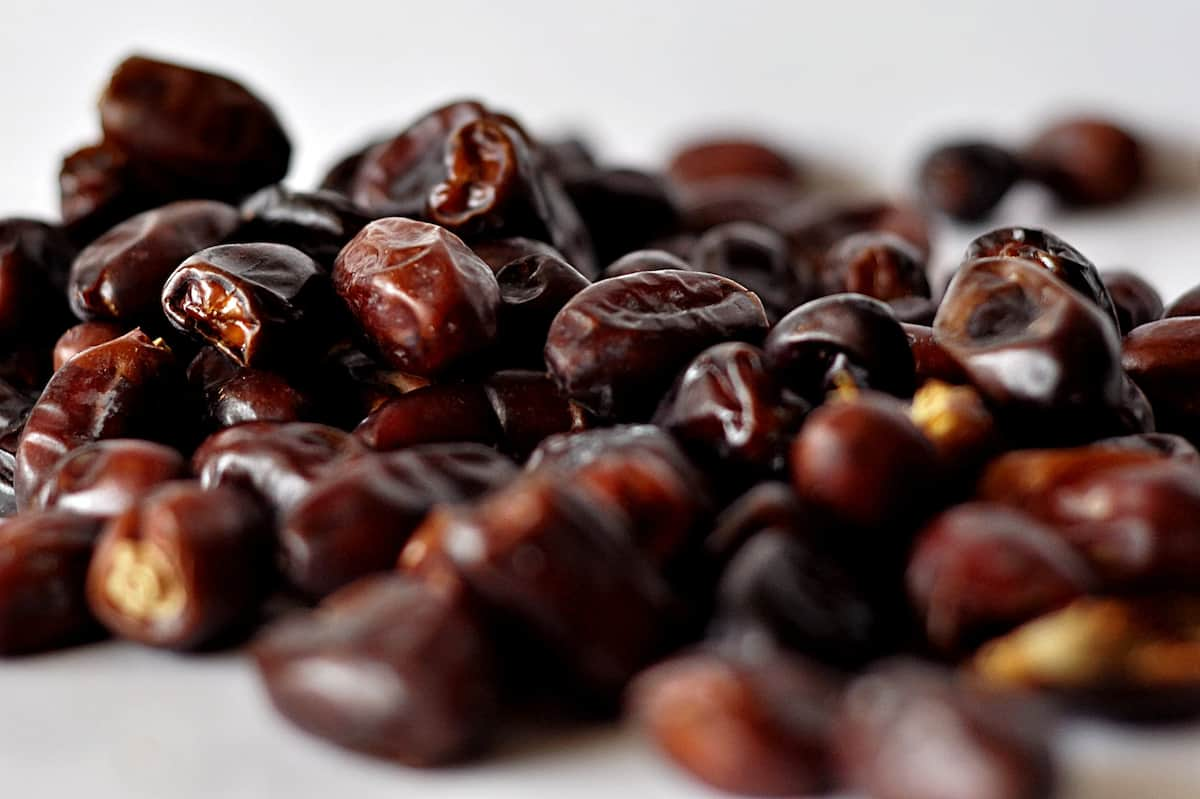
Energy bites, energy balls, joy bites, oat balls, and fat bombs are some of the names I’ve heard for these treats.
One thing that I think all of them have in common is that they are no-bake treats and that they are rolled into balls. Here are some of the ways in which they can be distinct from one another:
Protein: Some energy balls will have protein powder added to them in order to not only increase the total amount of protein in the snack, but also to round it out and make it more filling and enjoyable.
For me personally, making these protein balls is a lot of fun.
Low in carbohydrates: The base of these energy balls is typically flax, almonds, or protein powder, and they are typically sweetened with stevia or monkfruit to keep the sugar and carb content low.
The energy balls that I’m going to share with you in this post have a date basis, and they’re constructed with a base of nuts as well.
Because the dates contribute a significant quantity of sweetness and help hold the balls together, they often do not have any added sugar and do not contain any grains. When making the date-based balls, you will typically require a food processor or a blender in order to combine the nuts and dates in a pulverised form.
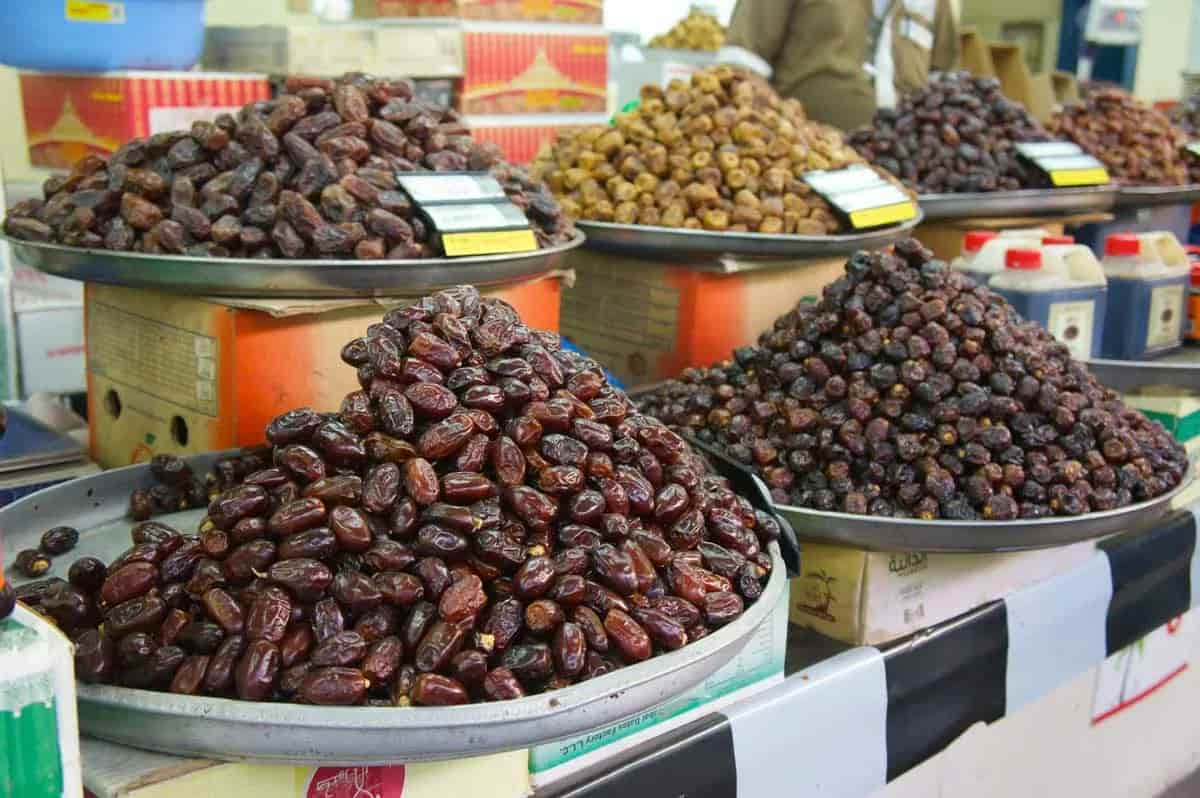
Oatmeal is the foundation of many different versions of the energy ball recipe. They are the ideal snack to take with you because they are not only high in fibre but also contain beneficial fats.
The cornerstone of my peanut butter no-bake energy balls is oats, and they are absolutely delicious.
Recipe Fundamentals for Date-Based Energy Balls
My go-to recipe for date energy balls calls for one cup of chopped Medjool dates, which is equivalent to roughly ten dates, and half a cup of chopped nuts. You are free to use any kinds of nuts you have on hand, as long as they are nuts.
The flavour can also be improved by including a little bit of sea salt, which is entirely discretionary on your part. I am frequently asked how to incorporate protein powder into date energy balls, so I decided to test it out.
I discovered that to increase the amount of protein in this basic recipe, you can reduce the amount of nuts to a third of a cup and add two tablespoons of protein powder, which is equivalent to about 10 grammes.
Base Recipe
- 1 cup Medjool dates (which is about 10-12 dates)
- a half a cup of nuts a teaspoon of salt for the Protein Powder Version
- 1 cup Medjool dates (which is about 10-12 dates)
- 1/3 cup nuts
- Two level tablespoons of protein powder
- a trace of natural salt
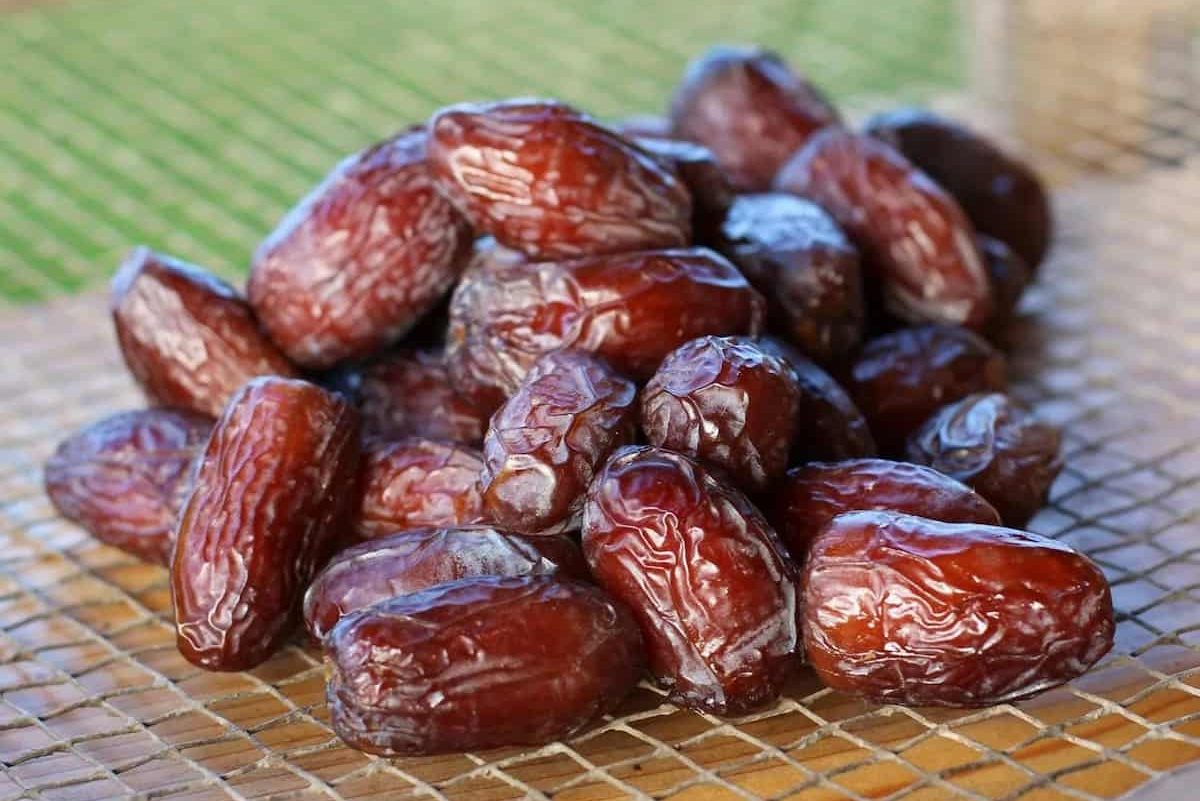
Is it possible to make date energy balls without using nuts?
How to produce energy balls that do not contain nuts is a question that I am frequently asked, especially around the time of year when students are returning to school.
I haven’t tried removing the nuts from my base recipe for date energy balls and replacing them with just seeds, but I have a feeling that it would turn out just fine! It is highly recommended that you use either pumpkin seeds (also known as pepitas), sunflower seeds, hemp seeds, or a combination of all three.
If you’re looking for a recipe that uses dates but doesn’t call for nuts, my samoa energy balls are a fantastic choice to consider. In addition to that, I have these nut-free sun butter energy balls and coconut protein balls made with coconut.
In the event that you stumble across a recipe for energy or protein balls that calls for nut butter, such as these peanut butter no-bake energy balls, you may easily replace the nut butter with tahini or sunflower butter in its place.
Which Kinds of Dates Should Be Used? When making energy balls, the use of Medjool dates is something that I always encourage. They have a flavour that is deep and almost like caramel, and their consistency is soft and chewy.
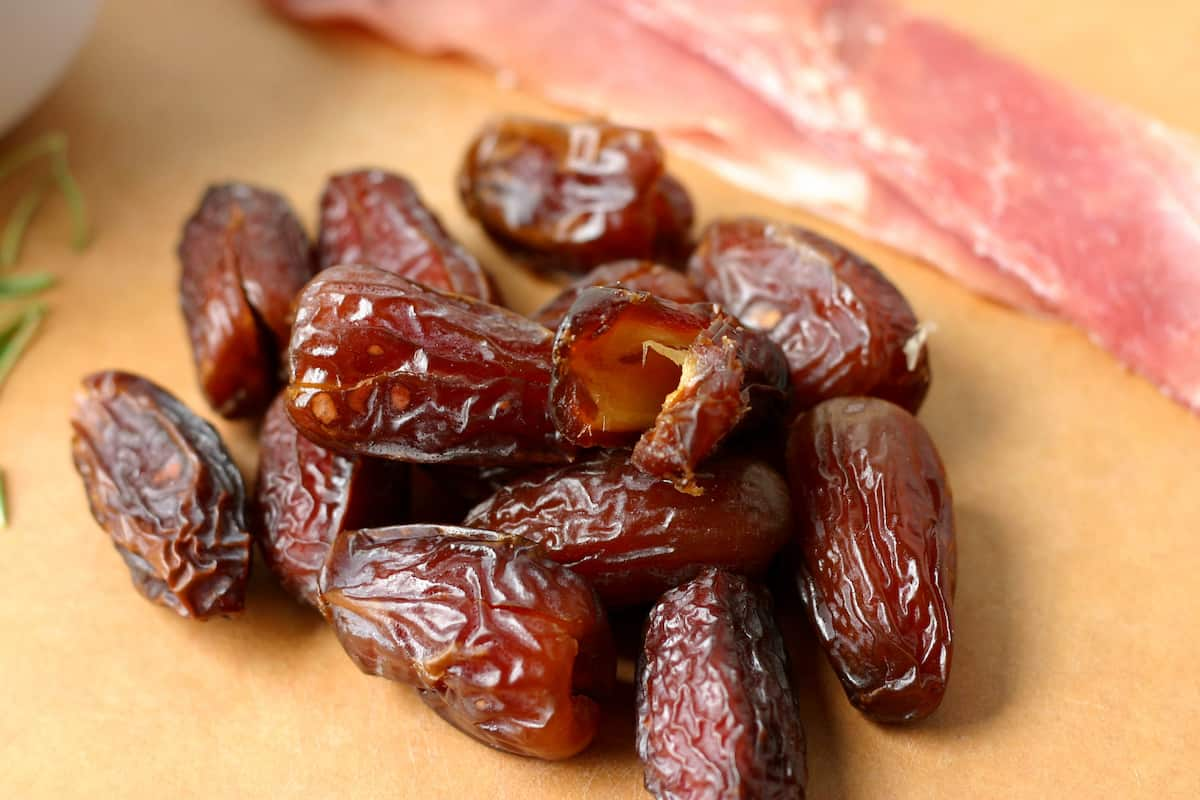
Other types of dates, also known as Deglet Noor, typically have a more compact size, a flesh that is more rigid, and a flavour that is more subtly sweet.
You won’t locate Medjool dates in the baking department of the grocery store; rather, you’ll find them in the produce section of the supermarket, typically close to the bananas. Be sure to grab fresh dates rather than baking dates that have been packaged.
The baking dates do not have the right consistency for energy balls because they are typically dusted in flour to prevent them from sticking together.
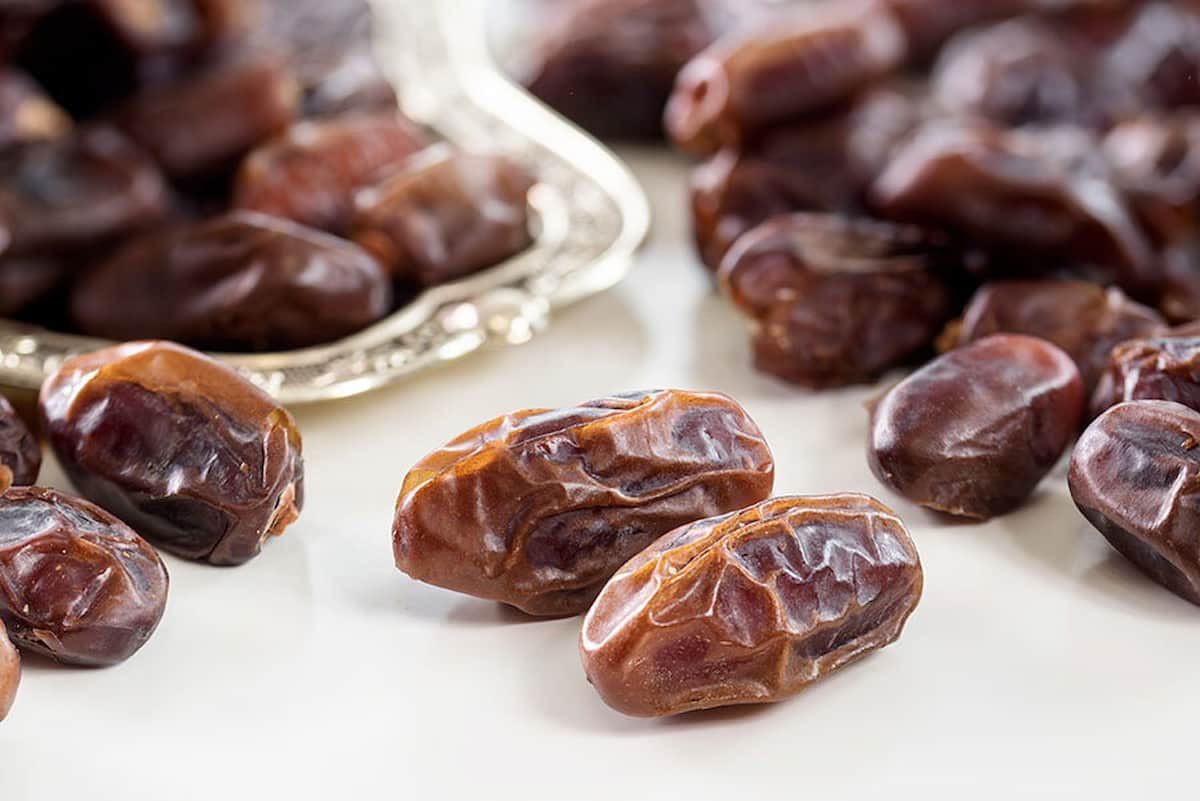
kabkab dates energy balls
Want to make energy balls and need Kabkak dates? You can purchase dates with the pits removed or without.
If you purchase whole dates, you will be responsible for removing the pits from the dates on your own. However, you shouldn’t worry about it because it’s far simpler than pitting fresh cherries. Simply cut the date in half lengthwise, and the pit will fall straight out.
Before putting the dates in your processor, you need to make sure there are no pits in them… When I turned on the food processor, I instantly realised that I had neglected to pull a pit out of the fruit before doing so because it made such a racket while it was whirling about.
Dates that are still fresh can still be eaten even if they have some white spots on them. There is no mould on them; the white spots are simply the sugar crystallising on them.
Having said that, they could be quite dry or a little bit hard. If this is the case, you will want to soften the dates before using them by soaking them in warm water for a while before using them.
For the purpose of making energy balls, Deglet Noor dates are not my first choice because, in comparison to Medjool dates, they are tougher, smaller, and less caramelly.
Since they are significantly smaller than Medjool dates, you will need to use a greater quantity of them in your energy ball recipe. You can, of course, utilise them for this purpose; however, it is recommended that you first soften them by soaking them in water.
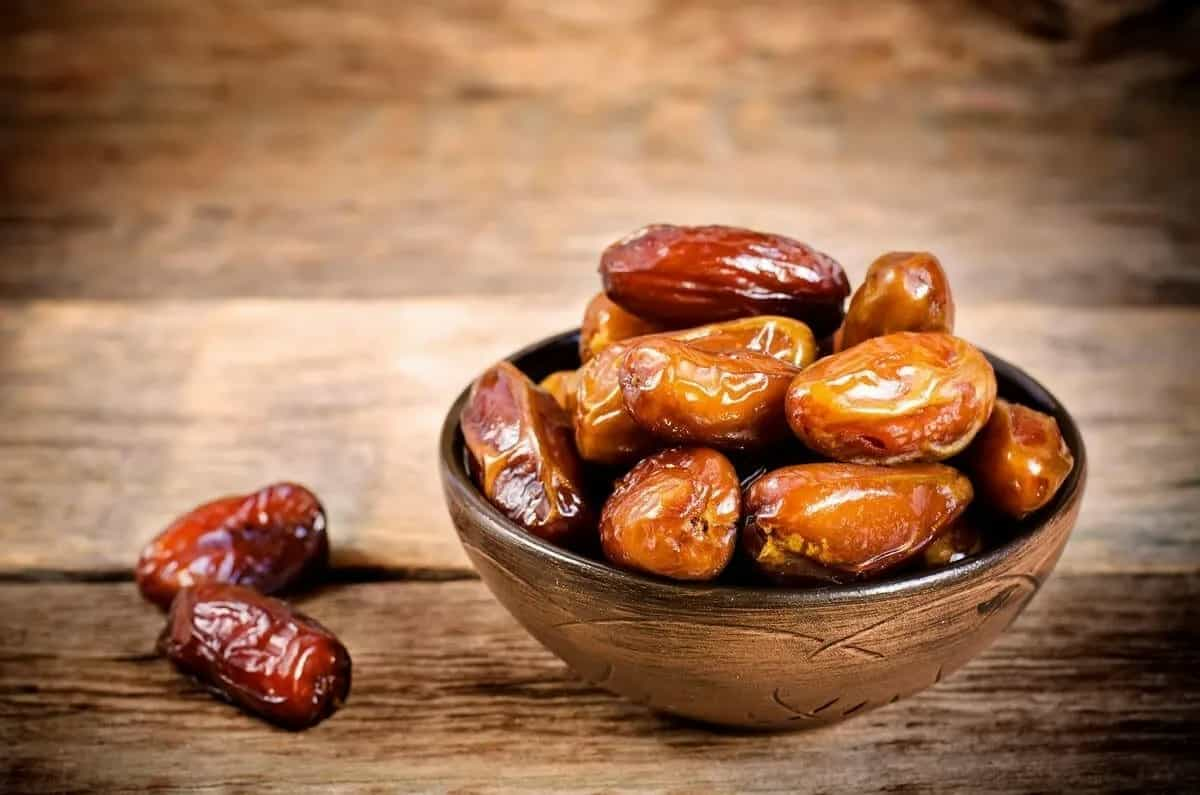
I want to make energy balls using dates; can I use a blender for that? I find that using my food processor is the easiest way to make energy balls with dates.
Although an extremely powerful blender such as a Vitamix can be used in a pinch to make energy balls, I find that using my food processor yields more even results in terms of the dates and almonds that are chopped up. It is possible to produce energy balls out of dates by blending them in a blender, but doing so creates a sticky mess and is a bit of a nuisance.
If you don’t already have a food processor, it is strongly suggested that you invest in one. My food processor is the one device in my kitchen that I simply cannot function without, and I have a lot of them.
I use it ALL THE TIME for anything from slicing onions thinly to shredding Brussels sprouts and preparing goodies like these chocolate-covered healthier peanut butter balls. I also use it to make a variety of salad dressings.
Check out my recipe for energy balls that don’t require baking or my recipe for protein balls if you don’t have a food processor but you still want to make some energy balls.
Because neither of these recipes calls for dates or finely chopped nuts, you won’t need a food processor to make them.
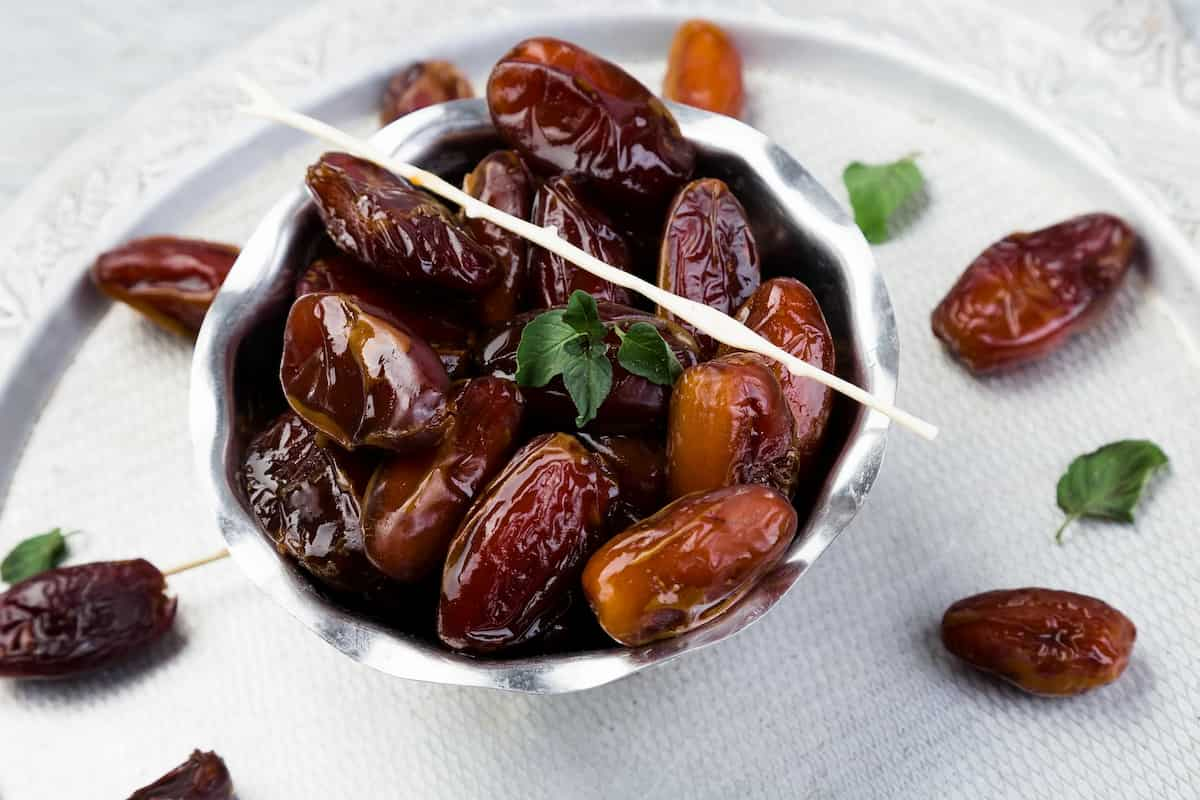
kabkab dates energy balls recipe
Curious about the energy balls you make with Kabkab dates? Need the recipe? Still hesitant about it? Follow on and get your queries answered!
Date Energy Ball Flavors
Are Energy Balls Good for Your Body?
Although I consider energy balls to be a nutritious alternative for a snack, it is essential to keep in mind that they are a calorie-dense food; therefore, just a tiny amount contains a significant amount of the meal’s beneficial components.
Since one ball can have as many as 100 calories, it’s simple to consume too many balls if you aimlessly munch or if you like to eat in large quantities… been there, completed that task!
When making your balls, pay attention to the materials that you put in them. You won’t need to add any more sweetener or dried fruit to these date-based energy balls because they already have the perfect amount of sweetness provided by the dates themselves.
The amount of salt that is in your energy balls is something else you need to keep in mind. If you use nuts that have been roasted and salted, the resulting mixture may contain a significant amount of sodium. The majority of the time, I go for raw nuts.
How many energy balls do you typically consume in a day? It is dependent on the circumstances entirely! I usually specify one ball as the serving size for the balls, but that doesn’t mean I just eat one – I just want to make sure that it’s simple for you to calculate the nutrition facts based on how many you consume! I normally consume two balls whether I’m having them for breakfast, as a snack before or after a workout, or as a post-exercise recovery meal.
A typical serving size of two balls has approximately 180–200 calories, which is roughly the same amount as a commercially available energy bar. After supper, I’ll typically only eat one if all I want to do is satisfy my craving for something sweet.
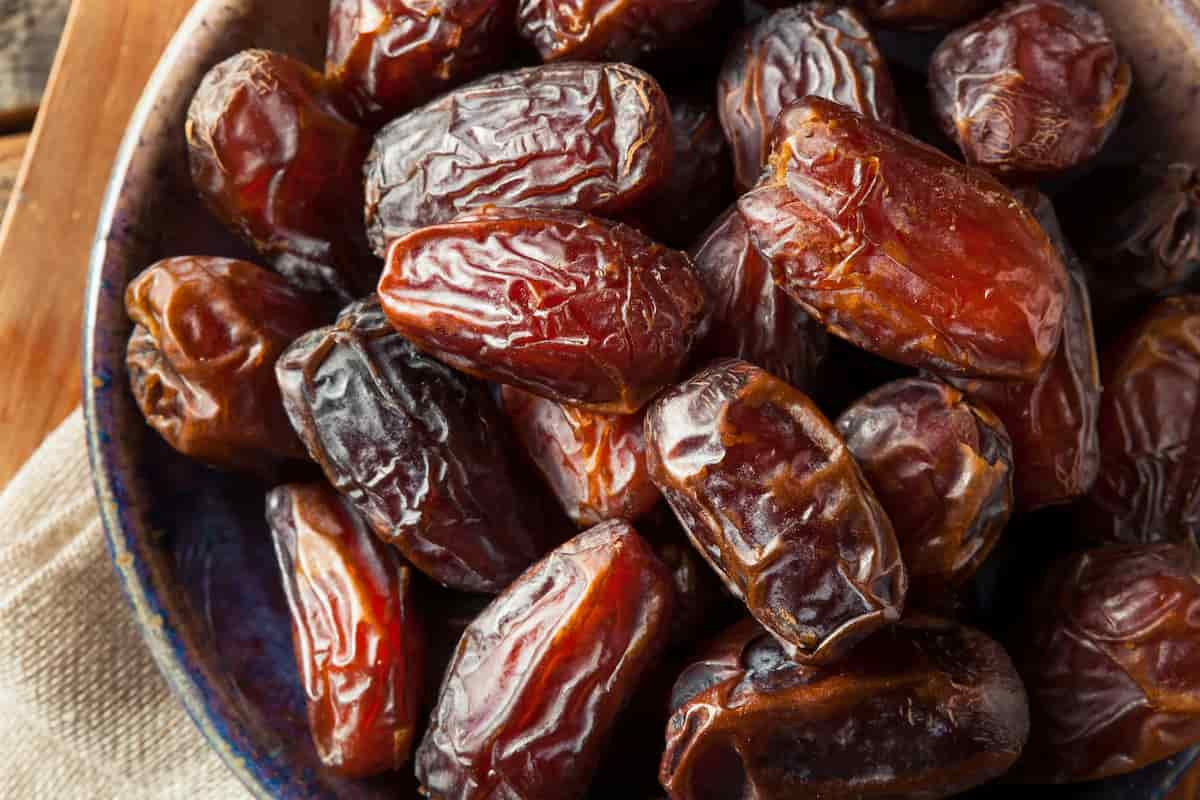
dates energy balls recipe
Are you still hesitant about what dates to choose for the recipe of energy balls? Need more guide? Read on!
When freshly harvested, Medjool dates are often quite pliable and yield easily to pressure.
It’s a good idea to soak your dates before using them, especially if they are older or just feel dry and brittle.
To rehydrate and soften them, simply throw them in a basin of warm water and let them sit there for 10 to 15 minutes. Before using, make sure to thoroughly drain and pat dry.
It is not unusual for the dough for your energy balls to appear crumbly at first; however, after a few minutes, it should start to become sticky enough to be shaped into balls.
Even if it appears to be a little crumbly, you can try pressing it with your hands to see if it will stick together.
If it seems way too crumbly, it’s possible that the dates you used were overly dry. If you don’t think your dates were particularly dry or tough, you can always add a couple more dates to the mixture and check to see if that helps things stick together better.
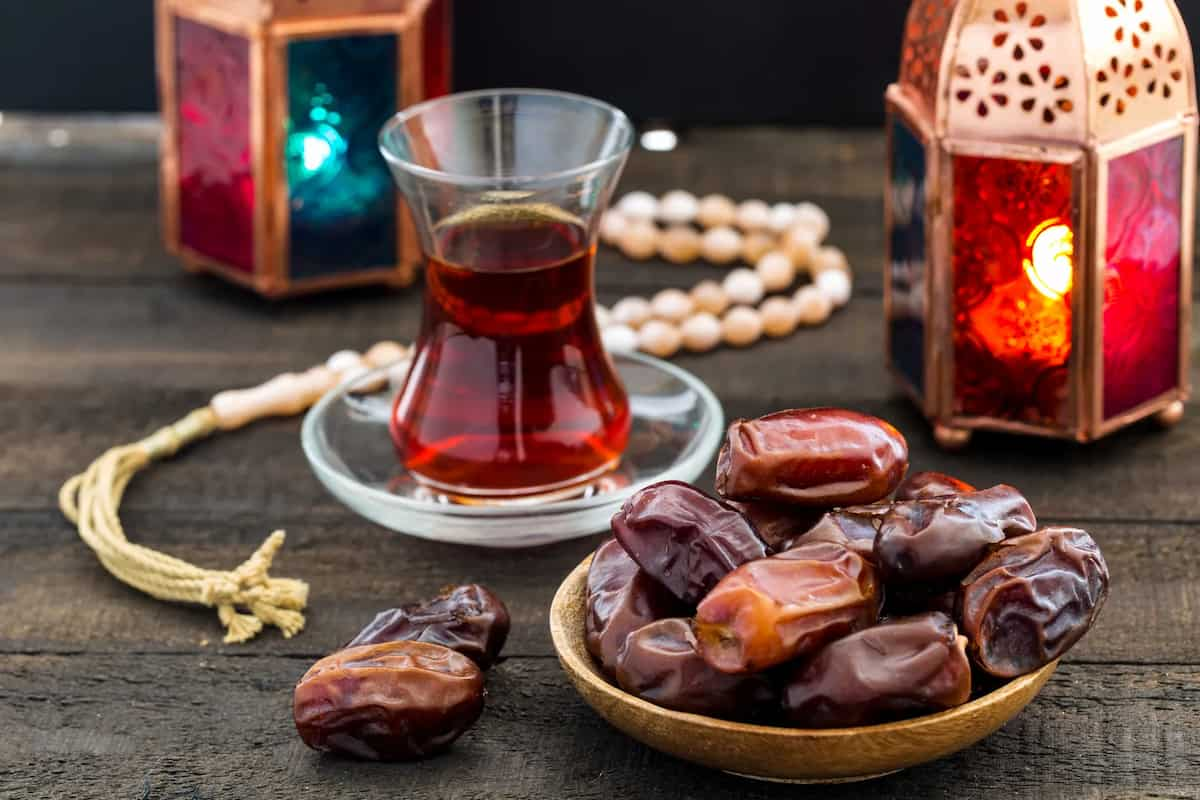
If your dates do appear to be a little dry or hard, you could try adding a little water to the dough until the mixture is sticky enough to shape into balls.
If this does not work, you could try using a different type of date. Begin by adding 1 teaspoon and pulsing the ingredients to see if it will cause the dough to start holding together. Caution is advised here because adding too much water will result in the dough being excessively wet.
Instructions for Storing Energy Balls
You can keep your energy balls at room temperature, in the refrigerator, or in the freezer if you put them in an airtight container.
They are good for a few days when stored at room temperature, up to one to two weeks when stored in the refrigerator, and up to three months when stored in the freezer. When it comes to keeping energy balls, I prefer to make use of glass storage containers or Stasher bags.
If you give these basic date energy balls (or any other flavour) a try, I would appreciate it if you would let me know how they came out for you by leaving a comment and rating them out of five stars.
Your feedback is really useful, not only for the EBF team but also for other readers.
